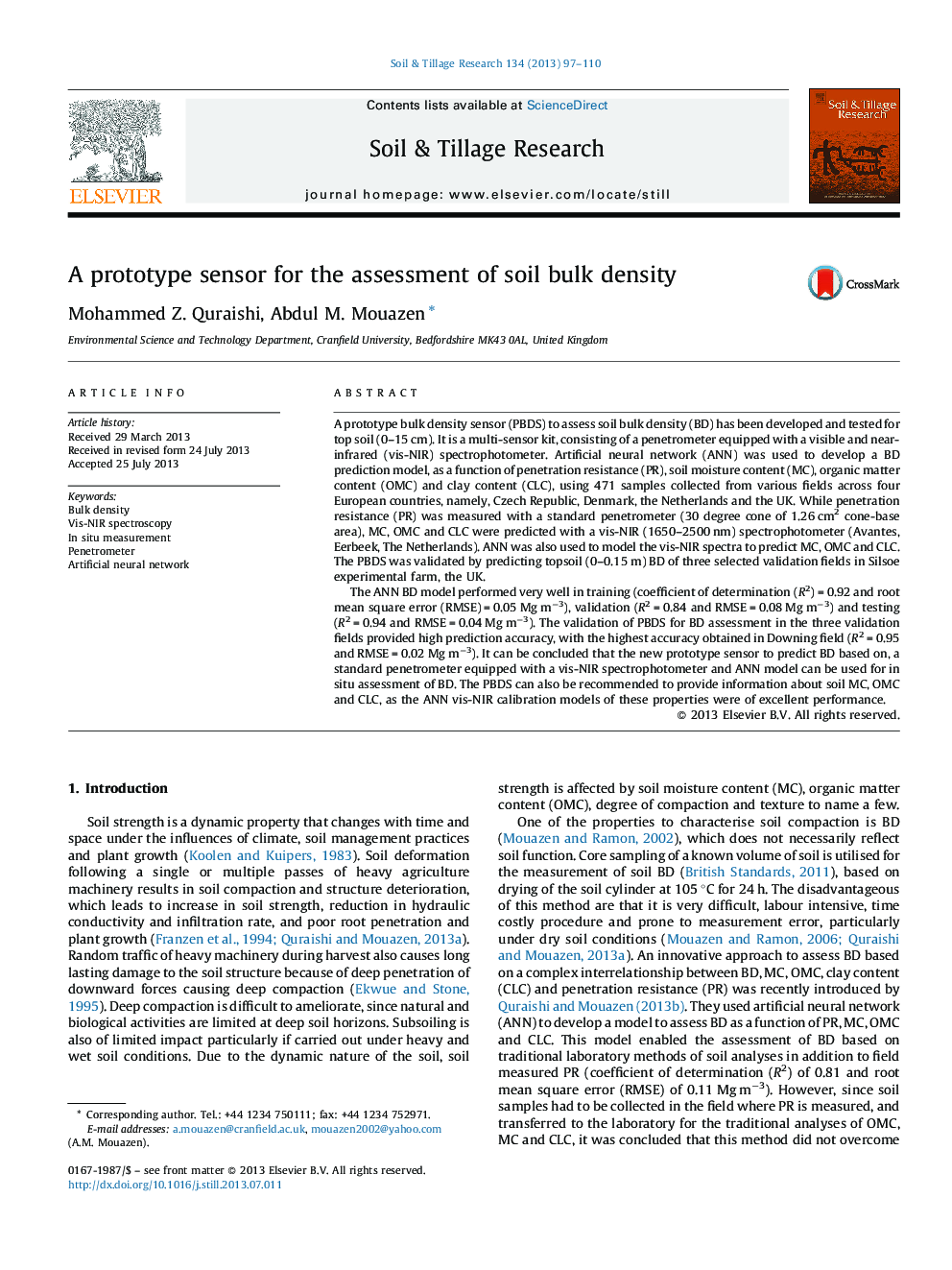| کد مقاله | کد نشریه | سال انتشار | مقاله انگلیسی | نسخه تمام متن |
|---|---|---|---|---|
| 305805 | 513052 | 2013 | 14 صفحه PDF | دانلود رایگان |

• Development and validation of in situ prototype bulk density sensor (PBDS).
• ANN modelling tool enabled the development of an algorithm to predict BD values.
• In situ prediction of topsoil BD was carried out in 3 fields in the UK.
• Core sampled and in situ predicted BD was highly correlated with R2 of 0.95.
• Maps of BD, MC, and OM were developed using geostatistical analysis.
A prototype bulk density sensor (PBDS) to assess soil bulk density (BD) has been developed and tested for top soil (0–15 cm). It is a multi-sensor kit, consisting of a penetrometer equipped with a visible and near-infrared (vis-NIR) spectrophotometer. Artificial neural network (ANN) was used to develop a BD prediction model, as a function of penetration resistance (PR), soil moisture content (MC), organic matter content (OMC) and clay content (CLC), using 471 samples collected from various fields across four European countries, namely, Czech Republic, Denmark, the Netherlands and the UK. While penetration resistance (PR) was measured with a standard penetrometer (30 degree cone of 1.26 cm2 cone-base area), MC, OMC and CLC were predicted with a vis-NIR (1650–2500 nm) spectrophotometer (Avantes, Eerbeek, The Netherlands). ANN was also used to model the vis-NIR spectra to predict MC, OMC and CLC. The PBDS was validated by predicting topsoil (0–0.15 m) BD of three selected validation fields in Silsoe experimental farm, the UK.The ANN BD model performed very well in training (coefficient of determination (R2) = 0.92 and root mean square error (RMSE) = 0.05 Mg m−3), validation (R2 = 0.84 and RMSE = 0.08 Mg m−3) and testing (R2 = 0.94 and RMSE = 0.04 Mg m−3). The validation of PBDS for BD assessment in the three validation fields provided high prediction accuracy, with the highest accuracy obtained in Downing field (R2 = 0.95 and RMSE = 0.02 Mg m−3). It can be concluded that the new prototype sensor to predict BD based on, a standard penetrometer equipped with a vis-NIR spectrophotometer and ANN model can be used for in situ assessment of BD. The PBDS can also be recommended to provide information about soil MC, OMC and CLC, as the ANN vis-NIR calibration models of these properties were of excellent performance.
Journal: Soil and Tillage Research - Volume 134, November 2013, Pages 97–110